coding, collaboration, community
BY AMANDA EASSON
The Neurohackademy 2018 cohort.
Credit: Madeleine Stevenson (University of Washington)
A few weeks ago, I had the opportunity to attend Neurohackademy, a summer institute for neuroimaging and data science at the University of Washington in Seattle, hosted by Dr. Ariel Rokem and Dr. Tal Yarkoni. The program was two weeks long: the first week consisted of lectures on the topics of data science, computer programming, and open science (all in relation to neuroimaging), and the second week consisted of one additional day of lectures followed by a 3.5-day hackathon, then project presentations at the end of the week.
We covered a broad range of topics during the lectures, such as:
● Docker (presentation by Dr. Chris Gorgolewski)
● Jupyter, Binder, Travis, and other tools for reproducible data science (presentation by Dr. Fernando Perez)
● machine learning using:
○ scikit-learn (presentation by Dr. Jake VanderPlas)
○ nilearn (presentation by Dr. Gael Varoquaux)
○ Keras (presentation by Dr. Ariel Rokem)
● cloud computing for neuroimaging (presentation by Drs. Amanda Tan and Ariel Rokem)
● software testing (presentation by Dr. Chris Gorgolewski)
● reproducibility (presentation by Dr. Russell Poldrack)
● fostering collaboration and positive open science communities:
○ presentation by Dr. Kirstie Whitaker
○ panel discussion by Drs. Kirstie Whitaker, Chris Gorgolewski, Satra Ghosh, Gael Varoquaux, and Fernando Perez
● data visualization (presentation by Dr. Tal Yarkoni)
● web technologies (presentation by Dr. Anisha Keshavan)
Importantly, the tools we learned about can be used to make our science more open and accessible to the neuroimaging community at large. Many of the sessions involved a hands-on component, which was helpful in allowing us to put the new skills we learned to practical use. The full schedule of lectures can be found here, and resources for the lectures can be found here.
During the second week, we had the opportunity to work in groups on a broad range of interesting neuroimaging- and data science-related projects. My fellow team members and I learned how to use Nipype, an open-source tool that provides users with a standard interface for various neuroimaging software packages and the ability to create a single workflow that involves multiple software packages. We developed a Nipype interface for The Virtual Brain, a neuroinformatics tool that integrates structural and functional imaging and neural mass models to simulate brain network dynamics. Below is a Nipype-generated graph of a workflow for a set of simulations for a single subject, in which two values of the global coupling parameter and two values of the network noise parameter are explored:
Other hackathon projects included dockerizing and creating a Nipype interface for the Pipeline for Analyzing Lesions after Stroke (PALS), creating an open science score for journals (O-Factor), using machine learning to predict participants’ ages based on structural and functional imaging (brain_age), and many others, all of which are described on this Neurohackademy github page.
The strong sense of community at Neurohackademy made the experience even more memorable. The instructors and participants were welcoming, inclusive, and always willing to help others. Everyone had unique skill sets, which made for a highly supportive environment in which everyone could feel comfortable teaching and learning from each other. Whenever someone had a question, there was someone with the expertise to answer it.
All in all, Neurohackademy was an extremely rewarding and enriching experience. It was a privilege to learn about data science, computer programming, and open science from experts in these fields, and to apply our newly-learned skills while collaborating on interesting neuroimaging projects during the hackathon. Neurohackademy provided us with a strong skill set that will allow us to practice open science and build supportive communities. I left Neurohackademy feeling motivated to continue to develop my skills in these areas, and to share what I have learned with my colleagues. I sincerely thank all of the organizers, instructors, and participants at Neurohackademy for a memorable experience, and I highly recommend this program to anyone who is interested in neuroimaging, data science, computer programming, and open science.
.



